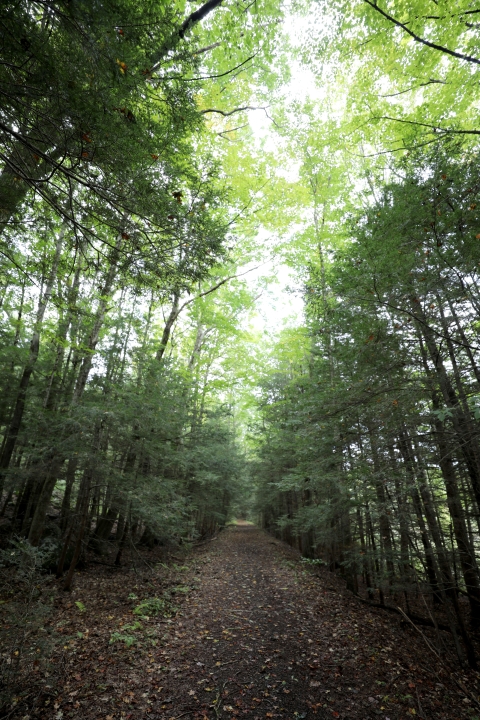In 2004, the U.S. Congress passed the Highlands Conservation Act, authorizing the Department of the Interior, through the U.S. Fish and Wildlife Service, to provide grant funding to state agencies to purchase and conserve land from willing sellers. This funding is appropriated annually under the Land and Water Conservation Fund, and each grant is matched at least dollar for dollar by the recipient.
We work with the U.S. Forest Service to help the Highland states, local governments, non-profits and private landowners conserve the land and natural resources of the Highlands region. Since passage of the Highlands Conservation Act, more than 16,000 acres of vital conservation land have been permanently protected.
People depend on the health and resilience of land, water and wildlife resources. Conservation of these resources provides clean drinking water, clean air and recreational opportunities, while supporting local communities and economies.
Projects supported by the Highlands Conservation Act grant program address key conservation objectives laid out under the Highlands Conservation Act. These projects prioritize important stewardship goals such as:
Clean water
The Highlands region is one of the most densely populated in the nation, and home to many streams, lakes and other important water resources, such as underground aquifers. Water resources sustain fish and wildlife and provide ample, clean drinking water for the people that call this region home.
State Highlight: In New Jersey alone, the Highlands provide clean drinking water for half of the state's population from only 13% of the state's land area.
Recreational and cultural resources
The Northeast is home to some of the most beautiful and iconic places on earth. One in nine Americans lives within 50 miles of the outstanding outdoor recreational opportunities provided by the Highlands. The Highlands Conservation Act aims to protect these places and preserve access to important recreational and cultural resources in the region. Many lands acquired under the Highlands Conservation Act are open to the public for hunting, fishing, hiking and other forms of recreation.
State Highlight: The New York and New Jersey portions of the Highlands contain more than 311,000 acres of public park lands, with more than 14 million visitor days per year.
Forests
Forests provide crucial habitat for hundreds of species of wildlife, fish and plants that live in the Highlands region. The large swaths of undisturbed forest land support both common and at-risk species, while preserving clean water and air for the people who depend on these resources.
Not only are forests vitally important ecologically, they also produce important economic resources like timber.
State Highlight: The Pennsylvania Highlands contains almost 100,000 acres of state forest and more than 30,000 acres of land in 12 state parks, as well as more than 800,000 acres of natural, undisturbed forest and open space, including habitat for hundreds of threatened and endangered species.
Wildlife
The Highlands region is particularly important for wildlife. The region supports a wide variety of species, such as breeding and migratory birds, resident amphibians and reptiles, and rare plant communities.
Whether these species migrate through or live there all year round, the Highlands region provides them with crucial forest and wetland shelter, clean flowing water and abundant food.
Some of these species include:
Fun fact: One-quarter of the nation's neotropical bird species are found in the Highlands region. Neotropical birds spend part of the year in Central and South America and part of the year in North America.
Agriculture
Farming and agricultural land are an important part of the culture and heritage of the Highlands region. Agriculture provides food, open space and economic benefits for people living in the Highlands region and beyond.
The Highlands Conservation Act was passed in 2004, establishing a federal grant program to conserve the natural resources of the region. Funding supports states, non-governmental organizations and others working to sustain key sites in the Highlands region for the benefit of both people and wildlife. It’s one of many landscape-level grant programs administered by the U.S. Fish and Wildlife Service.
Prior to passage of the Highlands Conservation Act, the U.S. Forest Service conducted several biological studies within the region to identify key natural areas — including critical watersheds, wildlife habitats, farmlands and forests — and prioritize work in these areas. These studies informed conservation actions under the Act and united partners to work toward a common goal.
In 2020, the Great American Outdoors Act Great American Outdoors Act
This landmark conservation law, enacted in 2020, authorizes the use of up to $1.9 billion a year in energy development revenues for five years for needed maintenance to facilities and infrastructure in our wildlife refuges, national parks, forests, recreation areas and American Indian schools.
Learn more about Great American Outdoors Act authorized use of $900 million annually in royalties from offshore oil and natural gas drilling to permanently support the Land and Water Conservation Fund, the source of funds for the Highlands program.
The Highlands Conservation Act’s reauthorization in 2022 allowed updates and expansions of the grant program based on available science to address the issues of our time — climate resilience, habitat connectivity and equitable access to the outdoors — and broaden its potential reach to 10 million acres and under-resourced communities. Plus, county and municipal governments can now receive grant funds and conserve lands.



